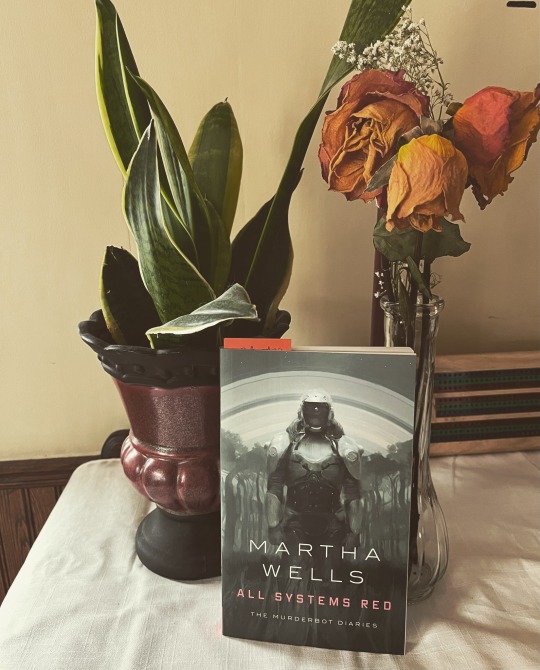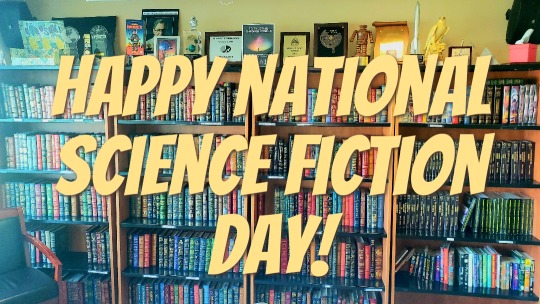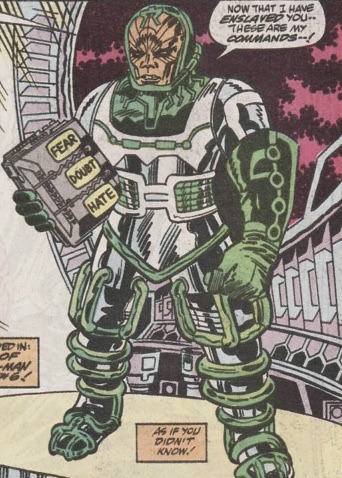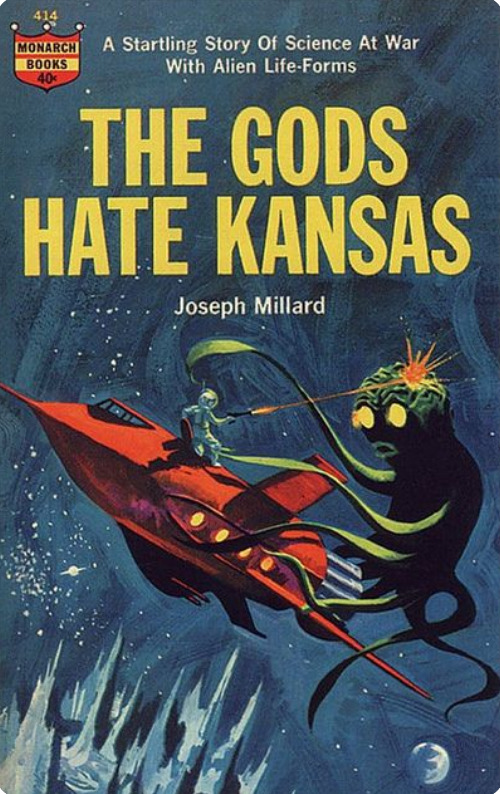#science fiction books
Text

From our stacks: Cover detail from Engine Summer. John Crowley. Garden City, New York: Doubleday & Company, Inc., 1979. Jacket by Gary Friedman.
#gary friedman#engine summer#john crowley#books#book covers#library books#book#book cover#science fiction#science fiction books#scifi#cats#design#detroit public library
2K notes
·
View notes
Text
Not sure what my motive is here, but . . .
The results will not affect which books I post about, because I actually have to want to read them, but I'm dying to know who likes to suffer!
#please i really wanna see the discourse!#book recommendations#queer books#polls#queer#literary tropes#literary fiction#fantasy books#romance books#science fiction books#historical fiction#books#queer community
212 notes
·
View notes
Text
This morning I'm crying.
I received an email from my local library asking me if I would like to donate a copy of Tomorrow's Loss, my book.
I'm crying because, I may not be getting paid for them to purchase my book or for patrons to check out my book, but they'll be able to read it. For free.
I'm crying because trans kids will pick up this book and see themselves represented as a protagonist.
I'm crying because gay and even ace kids will see themselves represented as happy and falling in love despite the world crashing down around them.
I'm crying, and even laughing, because I finally did it; and in a red state no less.
This is the beginning for me.
#life of a writer#queer writers#writers#writers on tumblr#writer#writers and poets#tomorrow's loss#oli marque#queer author#queer books#lgbt#lgbtqia#lgbtq#lgbt books#lgbtq books#lgbtqia books#scifi books#science fiction books#zombie apocalypse#library#i love libraries#i love the library#baton rouge#louisiana#self published author#self published books#indie writer#indie author#indie books#independent author
69 notes
·
View notes
Text
To call up a demon you must learn its name. Men dreamed that, once, but now it is real in another way.
William Gibson, Neuromancer.
#william gibson#neuromancer#literature#quote#book quote#science fiction#science fiction books#science#religion#humanity#what makes us human#humans#people#artificial intelligence#ai#technology#from books with love
68 notes
·
View notes
Text
Sci-fi books are rare in school even though they help kids better understand science
by Emily Midkiff, Assistant Professor of Teaching, Leadership, and Professional Practice at the University of North Dakota

Claudia Wolff
Science fiction can lead people to be more cautious about the potential consequences of innovations. It can help people think critically about the ethics of science. Researchers have also found that sci-fi serves as a positive influence on how people view science. Science fiction scholar Istvan Csicsery-Ronay calls this “science-fictional habits of mind.”
Scientists and engineers have reported that their childhood encounters with science fiction framed their thinking about the sciences. Thinking critically about science and technology is an important part of education in STEM – or science, technology, engineering and mathematics.
Complicated content?
Despite the potential benefits of an early introduction to science fiction, my own research on science fiction for readers under age 12 has revealed that librarians and teachers in elementary schools treat science fiction as a genre that works best for certain cases, like reluctant readers or kids who like what they called “weird,” “freaky” or “funky” books.
Of the 59 elementary teachers and librarians whom I surveyed, almost a quarter of them identified themselves as science fiction fans, and nearly all of them expressed that science fiction is just as valuable as any other genre. Nevertheless, most of them indicated that while they recommend science fiction books to individual readers, they do not choose science fiction for activities or group readings.
The teachers and librarians explained that they saw two related problems with science fiction for their youngest readers: low availability and complicated content.

Why sci-fi books are scarce in schools
Several respondents said that there simply are not as many science fiction books available for elementary school students. To investigate further, I counted the number of science fiction books available in 10 randomly selected elementary school libraries from across the United States. Only 3% of the books in each library were science fiction. The rest of the books were: 49% nonfiction, 25% fantasy, 19% realistic fiction and 5% historical fiction. While historical fiction also seems to be in low supply, science fiction stands out as the smallest group.
When I spoke to a small publisher and several authors, they confirmed that science fiction for young readers is not considered a profitable genre, and so those books are rarely acquired. Due to the perception that many young readers do not like science fiction, it is not written, published and distributed as often.
With fewer books to choose from, the teachers and librarians said that they have difficulty finding options that are not too long and complicated for group readings. One explained: “I have to appeal to broad ability levels in chapter book read-aloud selections. These books typically have to be shorter, with more simple plots.” Another respondent explained that they believe “the kind of suppositions sci-fi is based on to be difficult for younger children to grasp. We do read some sci-fi in our middle grade book club.”
A question of maturity
Waiting for students to get older before introducing them to science fiction is a fairly common approach. Susan Fichtelberg – a longtime librarian – wrote a guide to teen fantasy and science fiction. In it, she recommends age 12 as the prime time to start. Other children’s literature experts have speculated whether children under 12 have sufficient knowledge to comprehend science fiction.
Reading researchers agree that comprehending complex texts is easier when the reader has more background knowledge. Yet, when I read some science fiction picture books with elementary school students, none of the children struggled to understand the stories. The most active child in my study often used his knowledge of “Star Wars” to interpret the books. While background knowledge can mean children’s knowledge of science, it also includes exposure to a genre. The more a reader is exposed to science fiction stories, the better they understand how to read them.
A matter of choice
Science fiction does not need to include detailed science or outlandish premises to offer valuable ideas. Simple picture books like “Farm Fresh Cats” by Scott Santoro rely on familiar ideas like farms and cats to help readers reconsider what is familiar and what is alien. “The Barnabus Project” by the Fan Brothers is both a simple escape adventure story and a story about the ethics of genetic experimentation on animals.

The good news is that elementary school students are choosing science fiction regardless of what adults might think they can or cannot understand. I found that the science fiction books in those 10 elementary school libraries were checked out at a higher rate per book than all of the other genres. Science fiction had 1-2 more checkouts per book, on average, than the other genres.
Using the lending data from these libraries, I built a statistical model that predicted that it is 58% more likely for one of the science fiction books to be checked out in these libraries than one of the fantasy books. The model predicted that a science fiction book is over twice as likely to be checked out than books in any of the other genres. In other words, since the children did not have nearly as many science fiction books to choose from, their readership was heavily concentrated on a few titles.
Children may discover science fiction on their own, but adults can do more to normalize the genre and provide opportunities for whole classes to become familiar with it. Encouraging children to explore science fiction may not guarantee science careers, but children deserve to learn from science fiction to help them navigate their increasingly high-tech world.
#science fiction#reading#science fiction books#education#k 12 education#literacy#science literacy#science fiction literature
32 notes
·
View notes
Text
Flatland is an underrated classic that imagines life in a 2-D world. This is my review.

You’ll get a lot of answers when you ask when speculative fiction was born. Some will tell you that it began with Hugo Gernsback and the pulps. Others will say that it goes as far back as mythology and folklore. Personally, I go with those who say that it began with Mary Shelley’s Frankenstein, though I don’t discount earlier works such as Gulliver’s Travels or The Tempest. I say all of this because I’m taking us back to the 19th Century for today’s review. We’re going to review the classic novel Flatland: A Romance of Many Dimensions by Edwin A. Abbott.
Imagine, if you will, a sheet of paper that is infinitely large and stretching to all sides. Now imagine that on this sheet of paper there are a series of geometric shapes, but instead of staying in place these shapes move about and have complex social lives. Welcome to Flatland, a world of only two dimensions. There is width and length, but there is no height or depth.
The book follows A. Square who is…well, he’s literally a two-dimensional square. He acts as our guide to the realm of Flatland and relates to use the ways of his countrymen and their doings. There are two main events that serve to completely change A. Square’s world view. The first is his contact with Lineland, a world of only one dimension, and the second is meeting a figure known as Lord Sphere. Lord Sphere claims to come from a strange world of three dimensions called Spaceland.
The book goes into great detail about how life works in a world with only two dimensions. For example, it is customary to meet someone by feeling them in order to determine their shape. It’s also considered polite to give directions to the way north when meeting a traveler on the road. Societal rank and job are determined by the number of sides that one has, with circles being at the top of things. Each successive generation gains an additional side, except for the low ranking isosceles triangles, though there are exceptions. Women, being incredibly sharp and pointy lines, have restrictions placed on them so that they can avoid constantly killing people by accident. We also learn much of the history of Flatland, such as why colors have been banned by the upper classes. There is some pretty great world building in this novel.
That having been said the fact the citizens of Flatland are all living geometric shapes does limit the amount of exploration that can go into their biology and physics. A. Square does hint at future explanations, but he decides that it will take up too much time and bore the reader. Or to put it another way, if you wonder how they eat and breathe and other science facts…well, I’m sure you all know the words to the Mystery Science Theater 3000 theme song. You’ll also notice that Flatland society bares more than a passing resemblance to the society of Victorian Britain. This is intentional, as Abbott intended for Flatland to be just as much a satire as a compelling story. For example, the class system of Flatland is rather absurd when given further scrutiny, but Abbott was making about about how the British class system was absurd and ultimately rather arbitrary.
Since it was written in 1884 Flatland has long since fallen into the Public Domain. As such, many other writer have tried their hand at tackling the subject matter Flatland is built upon. Usually they will focus on one particular aspect while ignoring the others. Admittedly I haven’t read any of these books, but of the ones I’ve heard of thanks to TV Tropes I’d say Planiverse sounds the most promising. It attempts to look at how biology, chemistry, physics and culture would function in a realistic 2-D world.
Have you read Flatland? If so, what did you think?
Link to the full review on my blog: https://drakoniandgriffalco.blogspot.com/2017/02/book-review-flatland-by-edwin-abbot.html?m=1
#flatland#Edwin A Abbott#2-D#2-D World#satire#review#science fiction#scifi#Victorian Britain#science fiction books#book recommendations#book review#audiobook review#audiobook#Flatland: A Romance of Many Dimensions#alternate dimension#speculative fiction#speculative evolution#2-D Dimension#speculative biology#public domain#public domain books#public domain literature
57 notes
·
View notes
Text

Did I buy this book because the author is going to make an appearance at the bookstore? Yup.
But now I’m obsessed.
📖 All Systems Red by Martha Wells
#godzilla reads#all systems red#martha wells#the murderbot diaries#murderbot#book blog#reading#reads#science fiction books#sci fi books#booklr#bookworm#bookish#bibliophile
106 notes
·
View notes
Text
Morally Grey Characters in SFF Books
Here are some book recommendations for speculative fiction (science fiction, fantasy, horror...) with morally grey or morally ambigious characters! This is definitely something I look for and I love having a twisted protagonist I can follow! Makes things a lot more interesting, I think.
The Poppy War, by R.F. Kuang
This is definitely a must-read when looking for morally ambigious characters, and if you've been looking for that then you might've seen this series around. This fantasy trilogy follows Rin, an impoverished orphan living in the Nikara Empire, who aces the Keju, a test meant to select the nation's richest into military colleges. Selected into one of the most prestigious schools, Rin must now face issues of colorism, gender and class, while the possibility of war dangles over the college's head.
Don't be fooled by the synopsis, though. The Poppy War is not a magical-school type of story. This series revolves around Rin's corruption arc - which Ms. Kuang crafts incredibly. The character development and the attention to detail with the world-building in The Poppy War are both impressive, especially considering that the first book in the trilogy was Ms. Kuang's debut. Rin's decisions will leave you screaming, crying and (you guessed it) throwing up, as she gradually destroys everything around her.
She Who Became The Sun, by Shelley Parker-Chan
Another debut, She Who Became The Sun is definitely reminiscant of The Poppy War in the sense that it not only features morally grey characters, but is also set in an Imperial China-inspired world. Here, we follow Monk Zhu, who assumes her brother's identity, sure that she is destined for greatness, and the people she meets in her quest to achieve this. Simultaneously, we read about Ouyang, an eunuch general who serves – and is lowkey in love with – Esen, the son of a province's Prince and the war they're involved in.
Ouyang and Zhu are prime morally grey material. Zhu is motivated by her desire to achieve greatness, which was profecized for her brother, and, as she assumed his identity, she believes is now her destiny. Ouyang, on the other hand, is a more spoiler-ly case - but trust me when I say his decisions are questionable at best.
This is another case of masterful character development, beautifully crafted by Mx. Parker-Chan. Not to mention their writing is absolutely incredible here, flowerly without being too much, and their inclusion of the themes of gender is so well done.
Oh, yeah, did I mention this is queer as all hell?
The Traitor Baru Cormorant, by Seth Dickinson
Since we're talking about books that are queer as hell, I give you: The Traitor Baru Cormorant! I finished this one the other day, actually, but this trilogy, soon to be a quartet, is definitely a must-read if you're into morally grey protagonists. The Traitor Baru Cormorant is about (say it with me) Baru Cormorant, a native of Tananoke, a small island nation that is conquered by the Empire of the Masks. The Masquerade's homophobic and sexist policies affect Baru's family as one of her fathers is killed for being queer. Baru swears revenge, and she knows exactly how she'll exact it: from the inside.
The Traitor Baru Cormorant follows her path of revenge as she inflitrates the bureaucracy of this Empire. So, as you can probably guess, it's a very politically-driven book, and it's for sure very dense. I would definitely recommend it, though, if you're up for it -- The Traitor Baru Cormorant has probably the best representations of moral greyness I've ever read. Baru's character is so layered and complex. Her every move is questionable, though you know her motives are good, all focused on the liberation of her home, Taranoke, from imperial rule.
A Game of Thrones, by George R. R. Martin
Another dense, political one, but this definitely needs to be on the list. Mr. Martin is a master at creating dense plots with the most complex characters you've ever read - and none of them are good. Every single character (except for maybe Ned Stark??) in this series makes questionable decisions, and as the plot progresses they only get more fucked up. The A Song of Ice and Fire series, also known as Game of Thrones, the title of its first book, follows the political situation of Westeros and its surronding countries, as its noble families fight for power in the aftermath of a rebellion.
Although this is definitely a must if you're into grey morality, Mr. Martin's masterpiece comes as a big commitment. The series currently spans approximately 5,000 pages across five books, and it has been more than a decade in the making. Fans (me included) have been waiting for the mythical Winds of Winter for years, and after that is published, there's still A Dream of Spring, which hasn't even begun to be written. It's important to keep that in mind before diving into this one, but let me be the first one to tell you, it's definitely worth it.
I have a couple of more of these, so if you ever need a book full of morally grey characters, just drop me an ask and I'll get back to you with a couple more :)
#morally grey characters#morally grey protagonist#morally grey#morally gray#book recommendations#fantasy books#science fiction books#queer reads#sff books#queer sff books#the poppy war#babel#she who became the sun#radiant emperor#the traitor baru cormorant#the masquerade#got#asoiaf#game of thrones#a song of ice and fire#books books books#booklr
89 notes
·
View notes
Text
Cheers from our home to yours!

Here's to reading a great book today - it's a national holiday (well, sorta) and Isaac Asimov's birthday!
(photo is a set of bookshelves in Ad Astra headquarters, with part of our science-fiction award and memorabilia collection)
Some cool stuff about National SF Day: X
24 notes
·
View notes
Text
Hello, and welcome to the Official Tumblr for Gollancz, the oldest dedicated publisher of SFF and Horror fiction in the world.
I set this up because I'm not allowed to touch the company Instagram or TikTok accounts ("you'll break the algorithm" psht) and I got told off for retweeting too much stuff.
We were founded in 1927, and became a specialist SFF imprint in 1962, meaning that we were able to celebrate our 60th birthday and our upcoming 100th birthday only a handful of years apart.
We have a wikipedia page, which makes us feel very Special and Important.
People We Have Published:
Leigh Bardugo
Joe Abercrombie
Brandon Sanderson
Terry Pratchett (and Neil Gaiman That One Time)
Arthur C. Clarke
Ursula K. Le Guin
Philip K. Dick
Dhonielle Clayton
George Orwell (No I'm serious I found one of his royalty statements in a box in archives from the 1930s)
Peter S. Beagle
Joe Hill
Stephen King (Hodder and Stoughton will pry The Green Mile from our cold dead fingers)
Jonathan Sims
Frank Herbert
Aliette de Bodard
Joanne Harris
Ben Aaronovitch
Kurt Vonnegut
And MANY OTHERS. SO MANY. Across 60-100 years and two lists (Gollancz, and our archive project the SF Gateway) we have hoarded some of the most incredible and exciting SFF and Horror ever written.
We love space, and magic, and robots, and unicorns, and things you see in a cheese-related fever nightmare. They're our favourites.

#gollancz#science fiction#fantasy#horror#science fiction books#fantasy books#horror books#greetings from the beyond
103 notes
·
View notes
Text

From our stacks: The Moon is Hell! by John W. Campbell, Jr. Reading, Pennsylvania: Fantasy Press, 1951. First Edition.
#the moon is hell!#moon#hell#the moon is hell#moon is hell#john w. campbell jr#book#books#science fiction#science fiction books#library books#detroit public library
99 notes
·
View notes
Text
Which version of this do you prefer?


*There's no original or adaptation tags on this one because the two were written concurrently; both were additionally partially inspired by Clarke's short story "The Sentinel"
#requests#films#books#literature#science fiction#science fiction films#science fiction books#2001 a space odyssey#2001: a space odyssey#arthur c clarke#stanley kubrick#the space odyssey series#space odyssey series#2001 a space odyssey novel#2001: a space odyssey 1968#polls#adaptation polls
13 notes
·
View notes
Text
Primary thoughts on The Left Hand of Darkness
I've just finished Ursula K. Le Guin's The Left Hand of Darkness, which if you haven't read, I believe a spoiler alert is in order for this post.
After reading The Ones Who Walk Away from Omelas and subsequently devouring the Earthsea Cycle, I have become an avid fan of Le Guin's work, both in fantasy and science fiction. Though I can't help but feel as if I am somehow late to the party in that regard.
This is not to be a full review of The Left Hand of Darkness, as I do believe in letting a book percolate on the brain before passing judgment; however, I do want to share some immediate thoughts.
By God, she can paint a whole society in few strokes. Both Karhide and Orgoreyn are as vivid to me as Venice or Austria (places I have yet to see, but have been related to me by friends and/or acquaintances). Grand cities, quiet villages, and the icy cold of the Gobrin Glacier are impressed upon the reader with the lightest of touches, never breaking the illusion and serving the characters as vivid backgrounds.
I found chapters 15-19 of particular interest. The rythym of the story seemed to change here, and Le Guin takes her time letting Estraven and Genly Ai crawl towards Karhide across the bitter wilderness. The time stretches for the reader as well as the characters, some scenes being repeated from both perspectives.
I believe in these chapters we are more dialed in to the characters' thoughts and feelings, peering closer and closer into the nature of their relationship during their journey. They formed a habit, a routine, monotonous and yet comforting in the simplicity of their mission.
Genly Ai describes how he feels about that time in this passage from the beginning of chapter 18:
"We are inside, the two of us, in shelter, at rest, at the center of all things. Outside, as always, lies the great darkness, the cold, death's solitude.
In such fortunate moments as I fall asleep I know beyond doubt what the real center of my own life is, that time which is past and lost and yet is permanent, the enduring moment, the heart of warmth.
I am not trying to say that I was happy, during those weeks of hauling a sledge across an ice-sheet in the dead of winter. I was hungry, overstrained, an often anxious, and it all got worse the longer it went on. I certainly wasn't happy. Happiness has to do with reason, and only reason earns it. What I was given was the thing you can't earn, and can't keep and often don't even recognize at the time; I mean joy."
Joy. Despite the pain, cold, and weariness Genly Ai describes a feeling of joy. What is the source of this joy? He doesn't exactly say. He deems this period in his life as the center, a theme that comes up in earlier chapters dealing with Gethenian mythos. The center of ones life, the center of time, etc.
Just before being rescued by Estraven he is trapped in a work/death camp in Orgoreyn, which he will surely remember as the worst time of his life, the most miserable. That is not deemed the center, or the most important. It's the warmth of the tent, the seclusion on the ice, and the forging of the companion-bond between he and his companion that Genly Ai cites as the center. A bond that is quickly (spoiler) broken when Estraven dies.
They are not romantically involved, nor sexually. They just work together, they survive together.
I think that extreme of a situation is not one that is easily come by for any reader. However, at least for myself there are a few memories that I could deem the "center" of my life as it stands today. These memories somewhat echo the experiences of Genly Ai and Estraven. One in particular was an afternoon spent alone with a friend before we parted after graduating from university. We cried, and lay in the sun in my empty dorm room until the sun drifted towards the horizon. I felt an intense bond to this person, and even today can picture that tiny room, the sunlight through the window, and the color of their eyes. I felt (at the time) that I was in the center of time. The center of my life.
In some later passages Genly Ai recalls specific details about Estraven's hair, or the smell of the tent that feel oddly familiar to how I experience memories that I've carried with me. Maybe I don't recall the conversations, but I'll remember certain details forever.
I'm not exactly sure how the comments/messages works on Tumblr.com yet, but please let me know your thoughts if you have any differing opinions or notes. I would love to discuss this book! Again, it's quite fresh to me so I am still settling on my opinions etc.
#ursula k. le guin#le guin#the left hand of darkness#writing#literature#review#books#estraven#genly ai#karhide#orgoreyn#Winter#author#discussion#feel free to discuss#what are your thoughts?#book reviews#science fiction#fantasy#science fiction books
38 notes
·
View notes
Text

Fantastic Four Annual Vol 1 # 5 introducing the Psycho-Man, 1967, drawn by Jack Kirby

Recruits for Akron, 1975, painted by Gray Morrow


If you are going to swipe, I guess swipe from the King
#jack kirby#psycho-man#fantastic four#marvel comics#perry rhodan#Recruits for Akron#swipe#comic book art#science fiction books
11 notes
·
View notes
Text

THE GODS HATE KANSAS (1964)
Art: Jack Thurston
#pulp scifi#science fiction#pulp#pulp science fiction#old books#pulp horror#pulp art#pulp cover#retro scifi#scifi#sci fi#sci fi art#jack thurston#60s science fiction#60s sci fi#60s pulp#60s pulps#1960s science fiction#1960s sci fi#science fiction books#monarch books
461 notes
·
View notes
Text

Desde un Mundo Remoto, Kelltom McIntire (José León Domínguez Martínez), 1976, cover art by Antonio Bernal.
14 notes
·
View notes